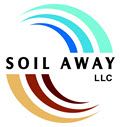
Clean Up Damage After Flooding – Litchfield, NH
It is a lot of work to clean up damage after flooding. That is why Litchfield, New Hampshire (NH) homeowners choose Soil-Away to restore their properties following a disaster. Flooding can occur from a wide array of sources such as a bathtub overflow, frozen pipe or ground water infiltration. Regardless of the source Soil-Away is ready 24/7 to clean up damage after flooding. We have been serving southern NH since 1990 and take pride in helping you recover from property damage quickly. Our flood damage restoration experts can be reached at 603-641-6555.
In order to clean up damage after flooding successfully there must be certain elements to the mitigation process. Litchfield homeowners who have hired Soil-Away to clean up flooding know that their restoration team executes their projects with precision. Below are key elements to the flood damage restoration process.
Ensure safety for building occupants
Personal safety for building occupants is paramount to have a successful mitigation effort. Water damaged buildings pose safety concerns that must be addressed prior to work being performed. Collapsing ceilings or walls along with slip-and-fall are a couple of the concerns on a water damage work site. A responsible flood damage restoration company will thoroughly inspect a work site to identify and address potential hazards so that risk is minimized for all parties.
Remove excess water from the structure
Excess water is detrimental to a property because it will continue to travel within the structure and expand the damages. To effectively clean up damage after flooding the water must be removed as quickly as possible. Extraction is often the fastest way to do this. Soil-Away has powerful, truck-mounted extraction units in which hoses are brought from the vehicle into a flooded building. The technicians utilize a wand at the end of the hose to extract excess water from the structure.
Determine restore or replace
Certain materials can be restored after being damaged by water, while other materials must be disposed of and replaced. A certified water damage restoration professional will be able to assess the damages to make the proper determination. The goal of emergency flood mitigation work is to minimize damages to save as much as possible, but in some cases items will just need to be replaced. A common example in the “restore versus replace” discussion revolves around flooded carpeting. Restoration pros will take into consideration the source of the water (clean or dirty), the condition of the carpet and the length of time it has been affected when they make the decision to either save or replace the carpet.
Monitor the drying progress
After the necessary water extraction, demolition and cleaning take place the restoration process turns to drying and monitoring. Effective clean up after flooding will always include the utilization of commercial drying equipment to remove elevated moisture content from the structure. Air movers and dehumidifiers work around the clock to lower building humidity and reduce structural moisture levels. As the building dries it is imperative for restoration professionals to measure and track drying progress to ensure drying efforts are effective.
If you need to clean up damage after flooding for your Litchfield, NH property call the restoration experts at Soil-Away 603-641-6555.

